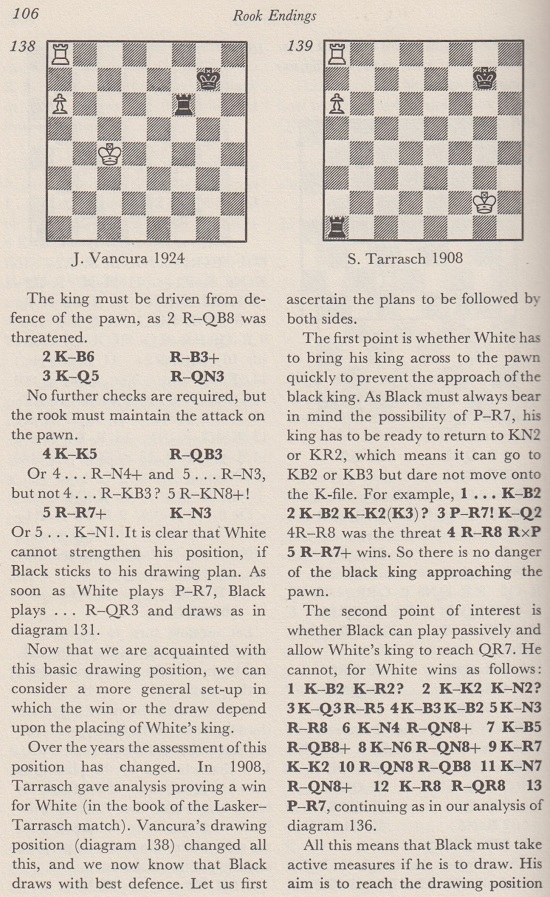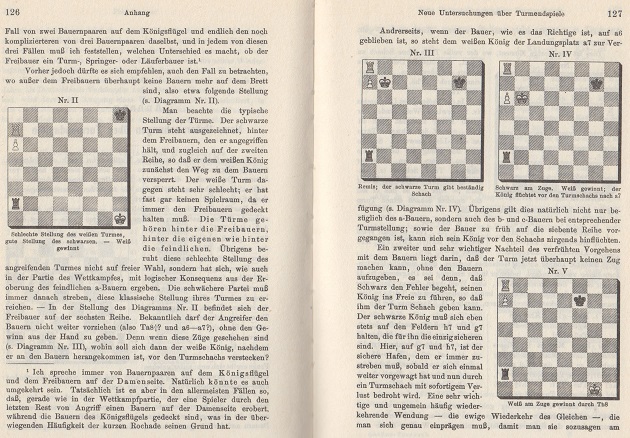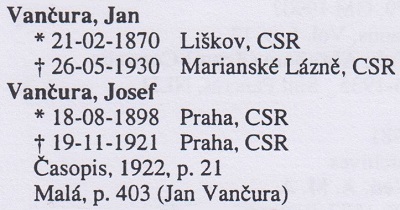
Edward Winter
Jean-Pierre Rhéaume (Montreal, Canada) asks for historical particulars about the Vančura position in rook and pawn endings.
It has been discussed in many endgame manuals, and below, for instance, is part of the coverage by P. Keres, on page 106 of his book Practical Chess Endings (London and New York, 1974):

A selection of other references:
As noted by Keres, the oft-mentioned citing of Tarrasch relates to Der Schachwettkampf Lasker-Tarrasch (Leipzig, 1908), which had a lengthy appendix entitled ‘Neue Untersuchungen über Turmendspiele’ (pages 125-148). Two sample pages:

An English translation was published in the 1909 BCM in six instalments. J. Berger discussed the analysis on pages 277-278 of Theorie und Praxis der Endspiele (Berlin and Leipzig, 1922). See too the broad coverage on pages 262-274 of Nouveau traité complet d’échecs. La fin de partie by A. Chéron (Lille, 1952), which includes references to Tarrasch and Vančura.
The exact nature and origins of the Tarrasch/Vančura connection are unclear. Nor are we yet even able to show the Vančura position in a 1924 source, although in the mid-1920s Časopis Československých Šachistů reproduced, posthumously, many of his compositions from the Czech newspaper 28. Říjen.
His death in 1921 was reported on page 21 of the February 1922 Časopis Československých Šachistů:

Some further information, by Josef Martinák, has been drawn to our attention by Karel Mokrý (Prostějov, Czech Republic).
We end for now by lobbing in a complication from the unpublished 1994 edition of Chess Personalia by J. Gaige:

‘Malá’ refers to Malá encyklopedie šachu by J. Veselý, J. Kalendovský and Bedrich Formánek (Prague, 1989), which has this entry:

(11517)
To the Chess Notes main page.
To the Archives for other feature articles.
Copyright: Edward Winter. All rights reserved.